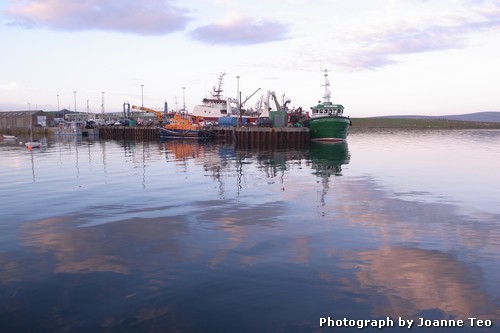Note: It was actually 17th August 2012 when this happened. Should I backdate my posts instead?
It was yet another cold, wet, misty, miserable start to the day. I am beginning to think this is all of Scotland in the movies – cold, dark and damp with big bearded Vikings robbing and stealing. Or bloody massacres in cold, dark and damp places.
Orkney is famous for its crafts, particularly jewellery, so we went to some shops along the Craft Trail as outlined in the official tourist brochure, to keep dry and out of the outdoors.
Again, the idea that everything on the island is made from scratch is done with a great deal of pride. From furniture to making fiddles to making jewellery, everything is handmade. Continually, that’s what I heard: Handmade, right here in Orkney.
There’s a lot of support for each other, rather than outright competition. We found arts and crafts from other shops in competing shops. It’s okay to mention other shop names selling the same things. If you asked where you could look at something similar, the recommendations came without hesitation.
I guess it’s those 6 months of actual work and business that actually goes on here. Might as well have everyone capitalize on it. It’s a harsh life – the cold, the wet, the wind – but you work 6 months and then have a vacation for 6 months. It could be a good life, if you think about it.
Of course Orkney doesn’t feel as remote as the Shetland islands. Interestingly, I found the people a little more distant too. Maybe it’s because to live so far out takes a lot of independence and resilience. Self sufficiency is the name of the game.
Around noon, the sun came out and it was actually hot. But by that time, it was lunch.
We had some sandwiches and tried a local brew called “Scapa Flow” which was quite nice and light and refreshing in Kirkwall.
Kirkwall, compared to Lerwick, the capital of the Shetland Islands, is a much nicer town. More quaint. Less industrial. As a town it had a little bit more to offer the tourist.
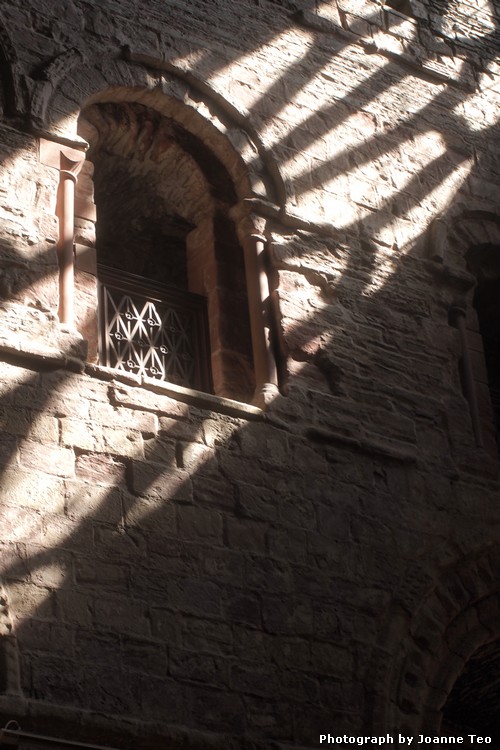
We headed to St Magnus Cathedral which had a flower show going on. The scent of flowers permeated the building, which added something special to what would be generally just another cathedral to visit.
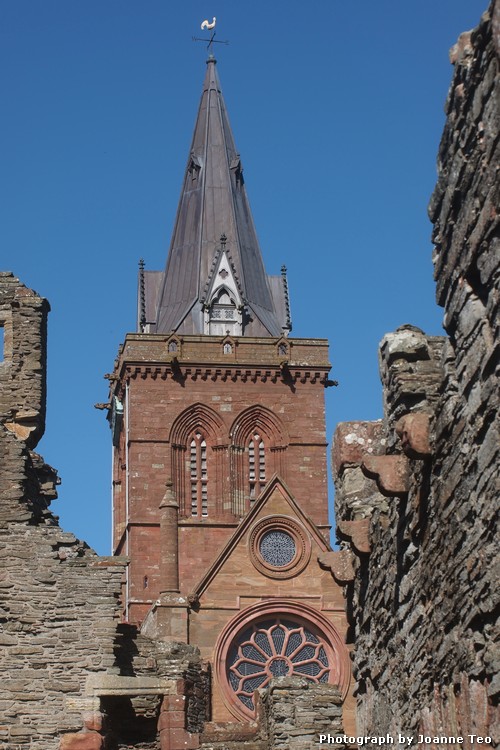
Further around the cathedral, we found the Bishop’s Palace and the other Earl’s Palace – mentioned in my previous post, built by the tyrannical Earl Patrick Stewart. I really liked this palace, it was actually pretty.
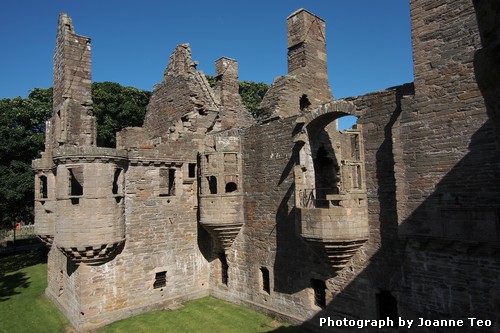
We then headed to Skail House and Skara Brae that we missed yesterday, arriving too late.
Again, we passed the Standing Stones of Stenness and Ring of Brodgar which still is fun to look at as you drive around. It was not any less majestic and full of mystery as the day before.
Skara Brae is the neolithic village on the grounds of Skail House, owned by William Watt.
Over time, it was covered in sand. Then it took another significant storm with big winds to reveal Skara Brae below.
As you approach Skara Brae, there are these stones marking significant milestones, such as when Stonehenge and the Great Wall of China was built, and it progressively gets older as you get to the settlement of Skara Brae.
It is quite a well preserved site. Since no one knew it was there, no one robbed it or explored it.
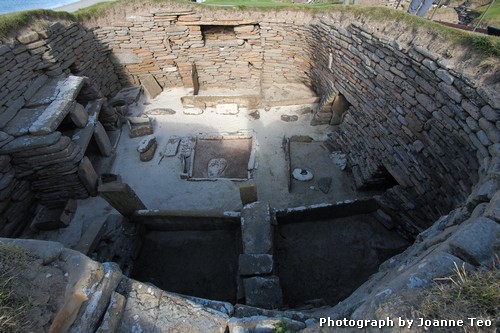
You have to imagine these structures with some sort of thatched roof. That middle square was the fire. The four square structure to the leftt was where they hid stuff. And the bottom two square things with the brick dividing it, is some sort of bed/bunk. I hope I’m remembering all the right.
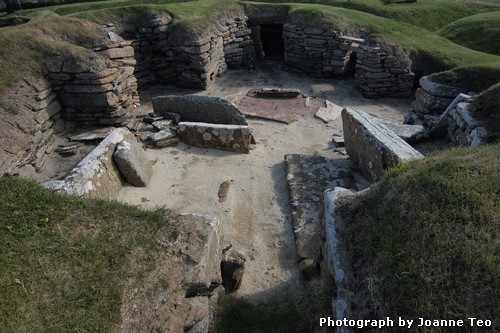
Here’s another sample. The passageway at the bottom of the photo is the entrance. To the left, that raised area is the bunk bed. In the middle, that reddish square, that’s where the fire is.
Skail House was quite nice, if you like walking through buildings and things that rich people once owned.
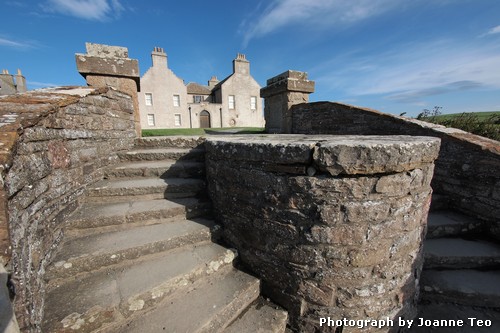
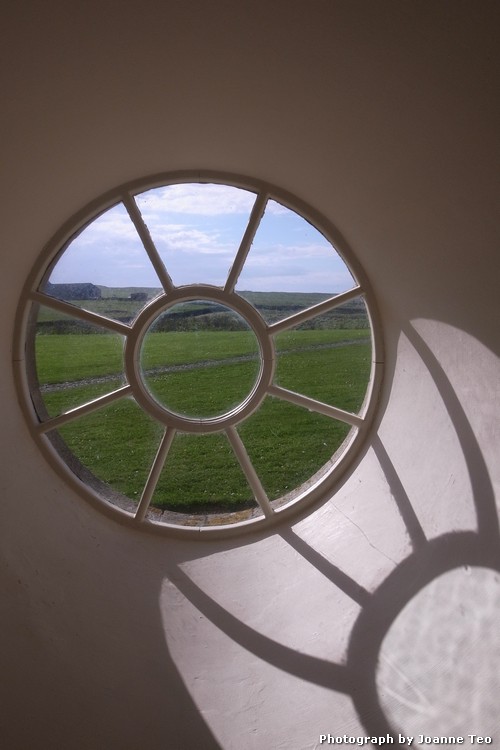
We continued on Yesnaby – isn’t that a curious name? – but we didn’t have the time to walk along the coast. More lovely cliff / ocean landscape.
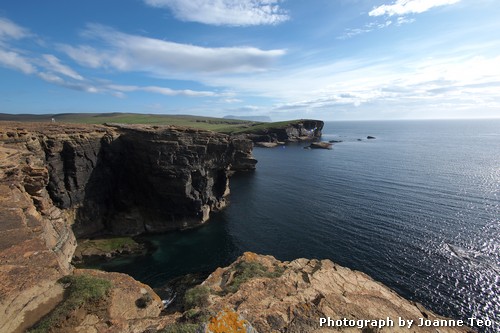
We arrived in good time at Maeshowe for our 7pm tour. Even after getting tickets, you still need to book a half hour tour. We were guided by a guide who is deaf. But she had really good diction and we had no problems understanding her.
So this is where bodies are buried. A chambered cairn. And no photos are allowed inside. But really – it’s just stones and 3 chambers inside the stones. And yes, there are carvings by the various people who came in – vikings and such because they all carved words and pictures on the walls.
And yes, apparently during the winter solstice sunset, the sunlight shines between the cliffs of Hoy, right through the doorway and lights up the whole chamber. Co-incidence or very good planning? You don’t want to be travelling in winter to Orkney, so they have these webcam shows online.
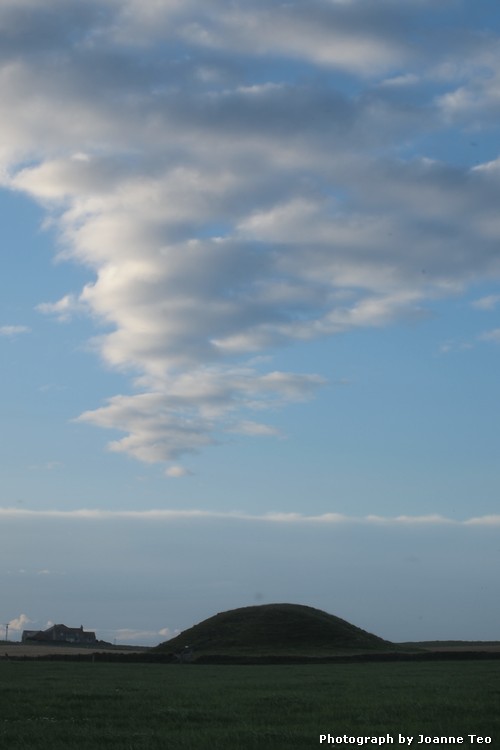
When I was leaving Maeshowe, I noticed this cloud that seemed to point to the mound, which is Maeshowe underneath.
And of course, it was time for sunset, so I got this photo:
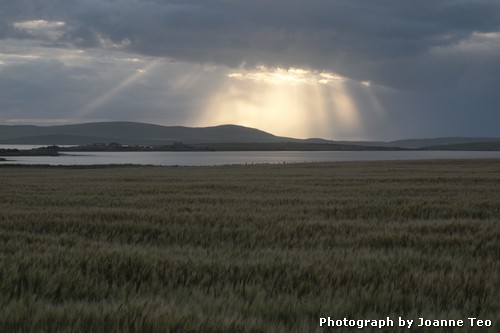
Yes, the sun does shine in Orkney.
It was way too late when we got to the other main town in Orkney, Stromness. Everything was closed. It’s a nice and quaint town. Walkable. The narrow streets reminded me of South Queensferry. Only narrower, more curvy.
From this side of the island, you can see Hoy.
